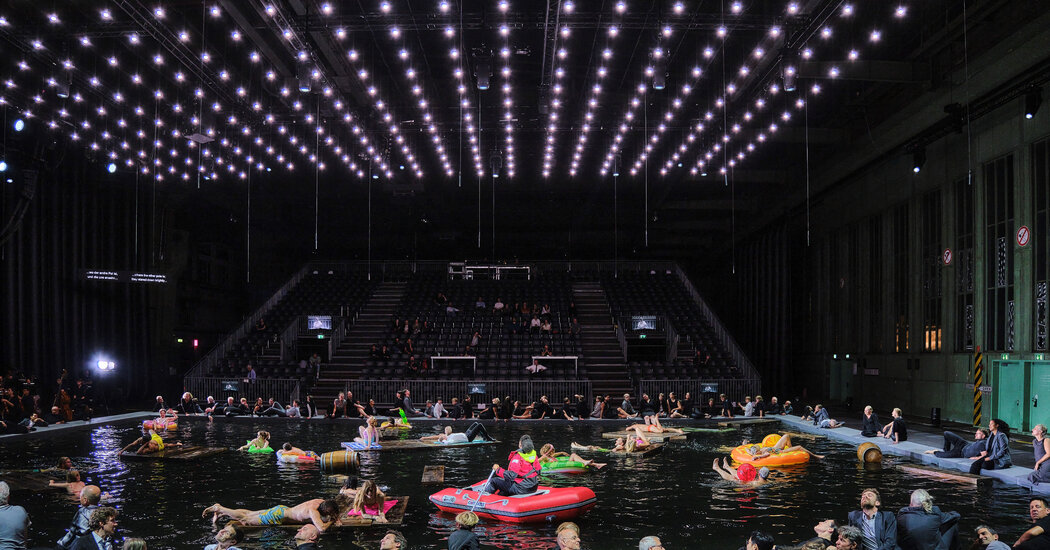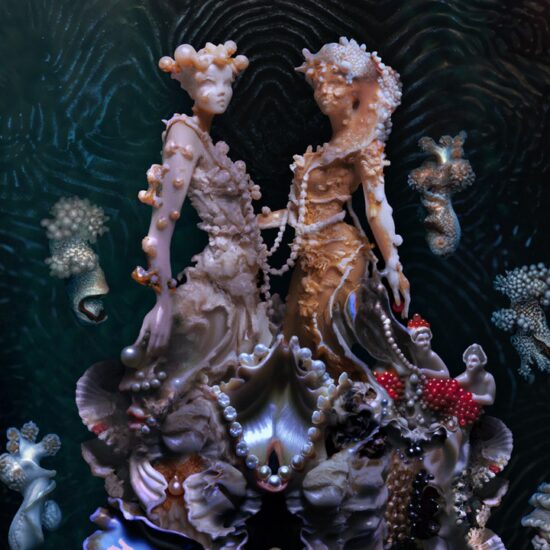
Rather than early-19th-century sailors, these people suggest contemporary bourgeois beachgoers, much like the oblivious leisure-seekers of the recent opera-installation “Sun & Sea,” too focused on tanning to perceive rising seas or the migrants lost in them. Jean-Charles (the forthright baritone Günter Papendell) here might be an accountant or lawyer.
Benches come together to form the raft and are occasionally detached to use as platforms around the pool. Death (the soprano Gloria Rehm, her voice never too harsh or hard) is here a glamorous diva in a sparkling, skintight black gown. As they expire, the choristers trudge out of the water and back to their seats, so we in the audience end up eerily immersed in the ghostly sound of the afterlife.
In both Gericault’s painting and Kratzer’s production, a lone Black figure is a focal point. Unlike the painting’s heroic savior, waving red fabric to get the attention of a ship on the horizon, the staging’s Charon, a Black woman (the resonant mezzo-soprano Idunnu Münch), is a pained, helpless witness: an aid worker in a rowboat too small to save anyone.
With the production already depicting the bourgeoisie transformed into desperate refugees, forced to undergo agonies they usually ignore, this casting decision furthers the sense of a reversal of the standard order of things, in which whites look on (or not) as people of color suffer.
It’s an intriguing decision. But in attempting to mix realism and stylization, Kratzer tends too naturalistic. As the shipwrecked passengers first scramble en masse toward the raft, splashing violently in the water, the sight is powerful. Later on, though, the survivors’ reaching, grasping hands and twitching bodies come off as strenuous cliché, lessening rather than increasing the intensity and depth of feeling. It’s not necessary to see an actor dressed as the Jesus that some of the poor souls hallucinate in their hunger, thirst and fear.
But near the end, the hangar’s tremendous door, near the side of the pool opposite the orchestra, slowly slides open. The temperature drops as the fresh night air pours in, and you get a tiny, terrifying glimpse of the relief that people in such a situation might find in death. The survivors emerge from the pool and walk out toward the dark, vast expanse of Tempelhof Field, led by an emergency van.
It would have been obvious, even without the van, that this forlorn procession was meant to evoke the path taken by the migrants who have been housed at Tempelhof over the past decade. But the opening of the door was a true, visceral dramatic coup, a fitting climax for a staging with the heft to feel worthy of a remarkable space.
The Raft of the Medusa
Through Oct. 3 at Tempelhof Airport, Berlin; komische-oper-berlin.de.













